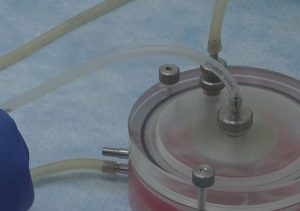Press Release Claims Vaping Could Cause Cardiovascular Disease
It seems all you need to successfully attack vaping these days is a superficial press release. Never mind scientific evidence, research methodology and all that other boring stuff, just state some negative impacts of using electronic cigarettes and you’re all set for heavy media coverage.
 We’ve covered how the media sometimes takes legitimate studies and spins them into scaremongering news stories, or how it often picks controversial research contested by most researchers and presents their findings as facts, but it turns news sites don’t even need actual studies to fuel their anti-vaping campaign, a simple presentations press release will do.
We’ve covered how the media sometimes takes legitimate studies and spins them into scaremongering news stories, or how it often picks controversial research contested by most researchers and presents their findings as facts, but it turns news sites don’t even need actual studies to fuel their anti-vaping campaign, a simple presentations press release will do.
This Sunday, at the American Heart Association’s Scientific Sessions 2017 event, a team of researchers presented some preliminary findings of a study on the impact of e-cigarettes on the cardiovascular system. The American Heart Association then put out a short press release with the main study findings, but not much else. That was enough to grab the attention of several scientific and mainstream news agencies, and now these preliminary findings are being presented as scientific facts on the internet.
According to the American Heart Association press release, the study funded by theU.S. National Institutes of Health examined the cardiovascular effects of e-cigarette aerosols relative to traditional cigarettes in mice and found that:
– Exposure to ENDS aerosol or traditional cigarette smoke rapidly slowed the heart rate (bradycardia) in mice;
– Exposure to aerosol of 50:50 vegetable glycerin and propylene glycol prolonged the heart’s electrical cycle;
– When heated, propylene glycol and/or vegetable glycerin generate aldehydes, acrolein, acetaldehyde, and formaldehyde, of which, only acrolein induced bradycardia in mice;
– Exposure to acrolein or PG:VG aerosol increased blood pressure in mice before the heart rate began to drop.
I can see why the media jumped on this as fast as they did, it’s great ammunition against vaping, but that doesn’t mean it’s all true. The researchers themselves admit that while exposure to e-cigarette aerosols “may trigger cardiovascular effects and may increase the risks of developing irregular heart rhythm and overall cardiovascular disease,” these are just preliminary findings and “further studies are needed to explore these effects in humans”.
Here’s the thing, though, we don’t actually know anything about this study or how it was conducted. All we have are these bullet points of things that the researchers found. But how did they go about reaching these results? It may not seem important to the average person, but it makes a huge difference.
Interestingly, Dr. Konstantinos Farsalinos, a research fellow at the Onassis Cardiac Surgery Center in Athens, Greece, reproduced two controversial vaping studies to show just how considerably poor methodology can affect the outcome of scientific research. The two studies had reported insanely high levels of aldehydes like formaldehyde in e-cigarette vapor, in some instances even higher than tobacco cigarette smoke.
Dr. Farsalinos proved that the researchers had applied too high a voltage to a high-resistance atomizer, which caused the cotton wicking to burn and release toxic levels of formaldehyde. He also pointed out that a human vaper could never have tolerated the mix of smoke and vapor, because of how disgusting it tastes, but because the study only used machines to emulate puffs, the results were recorded as normal. In his reproductions of the two studies, using appropriate voltages, Farsalinos detected no formaldehyde.
The American Heart Association press release only mentions the presence of aldehydes, acrolein, acetaldehyde, and formaldehyde, but doesn’t mention any amounts, or how they compare to levels found in cigarette smoke, but I suspect that these researchers also relied on machines to emulate vaping, so an error in methodology is certainly possible.
All I’m saying is that, at this point, we know so little about this study that I fail to see the point in promoting its preliminary findings without any information to back them up. So why put out the press release in the first place?
















